Have you started gardening yet? If you haven’t yet, now’s a great time to start. Many of your horror friends have recently sprouted green thumbs and are well on their way to reaping their delicious rewards.
Whether out of necessary preparedness, morale-boosting, or sheer boredom (we gotta do something while haunting our homes, right?), people are planting their own Victory Gardens. Fresh vegetables, fruits, and herbs right outside your doorstep!
Growing your own food is a fantastic idea (and freshly-grown produce is always a welcome ingredient in tasty meal recipes!). But, are you prepared for the inevitable garden horrors you’ll need to defeat in order to secure your victory (garden)…?
In this post, I’m going to do two things:
- Dish practical advice on how to defend your garden from bugs and weeds.
- Recommend pest-related horror movies you can wind down with after battling said garden horrors.
You ready? Shake your shovel above your head like a boomstick if you’re ready! Groovy. Let’s do this.
They’re Coming to Get You, Gardener!
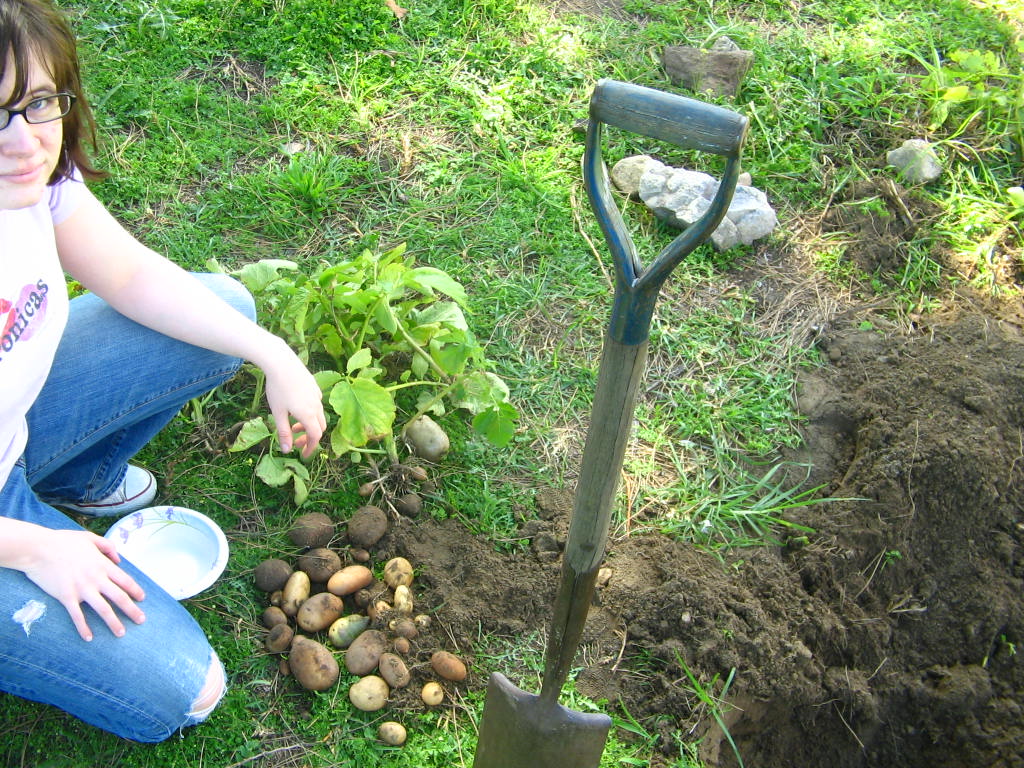
Garden horrors are amassing their forces and are preparing to wreak havoc on your budding food supplies! Or, depending on your location, they may already be here.
For example, in my area of Los Angeles, we’re already having temperatures hovering around 90-95°F — and it’s only May! And you know what rises up along with the thermostat? Bugs, that’s what! Bugs that like to chow down on your homegrown vittles!
So — spoiler alert — most of this post is going to be about how to deal with common bugs. However, since many of us in the horror community have adorable pets, children, and/or an impressive (and by “impressive,” I mean “truly terrifying”) family history of Cancer: I’m going to share how to deal with outdoor menaces without chemical pesticides.
Here’s how to deal with the six most common garden horrors you’ll run into as the weather heats up — and related horror movies you can enjoy:
1. Flies

Where do I even begin with flies? Ugh. There are so many varieties of flies and most of them are bad news (for you and your garden!).
Most armies of flies can be fought by, believe it or not, enlisting other bugs to help your cause. If you can purchase some ladybugs or raise some praying mantises, they’ll ruthlessly defend your home from most insect invaders.
If you’re not into that “fight fire with fire” (er…bugs with more bugs) approach, here are some other tactics you can try, depending on the enemy at hand and the specific garden horror they’re creating.
Note: If you don’t know your enemy (or potential friend!), try using WhatsThatBug.com — I’ve been using them for bug-related research for over a decade! They’re great.
Here are three of the most common flies you may run into:
Carrot Flies
Carrots are great. They’re full of fiber and nutrients, they’re versatile in recipes, they can be eaten on their own as snacks (their tops are edible too, and are a fave treat of my mom’s pet guinea pigs!), they can easily be stored (and can last for months with proper storage!), and — like most root vegetables — they’re relatively easy to grow. They’re a perfect crop for gardening newbies.
Unfortunately, carrots attract carrot flies. And while the flies themselves do minimal damage, their babies (maggots/larvae) can wipe out your entire crop before you even see them!
If you plan on growing carrots — or other delicious-smelling/sweet-tasting veggies — grow some “stinky” crops alongside them. For root vegetables, like carrots, you’ll want their stank friends to be other root crops: Try planting leeks or garlic!
The odorous crops mask the scent of your carrots/parsnips/potatoes/celery and confuse the carrot flies’ scent receptors, causing them to look for food elsewhere. The principle is similar to how you’d use garlic to divert zombies to an alternate lane in the original Plants VS. Zombies game.
Fruit Flies
Fruit flies aren’t dangerous — they’re not known for spreading filth and disease, unlike houseflies, and they don’t bite — but they’re gosh-darned annoying. They only live for about two weeks, but when each female is capable of laying 500+ eggs, their swarms can get out of hand really quickly!
These pests are likely to show up in your house in damp areas (sinks, drains, mops, etc.) or if you accidentally let any of your produce ferment (clean out your potato drawer often!). They’re also pretty “smart” when it comes to identifying ripe fruits… So, while your tomatoes and peaches and whatnot will be safe from them while they’re still growing, fruit flies can demolish them pretty quickly once they’re finally good enough to eat!
Fortunately, they’re not “smart” enough to avoid the simplest of traps! Pour a cup, half-full, of apple cider vinegar. Then, either cover the top with plastic wrap (with little holes punched in the top) or insert a paper funnel into the cup. The fruit flies basically go, “Why eat all this ripe fruit when I could get drunk on fermented fruit?!” and then they crawl into the cup of fruit vinegar and drown themselves like a buncha dummies.
Houseflies
Houseflies are more of a general hot weather/home horror than garden horrors; however, you’re bound to see ’em around after you’ve harvested your crops. Especially if you use your produce to cook something delicious and accidentally leave your leftovers out.
These lil nasties spread filth and disease (both by putting their gross poopy feet on everything and via their habit of vomiting on food before they eat it). Fortunately, they’re kinda dopey, so you can usually trap them with flypaper (or even just sticky tape hanging down from your ceiling).
Just remember to remove any flies you manage to kill. The scent of rotting fly corpses can lure in even MORE flies!! Yeah. Killing them can attract more of them into your home. Gross, huh?
The best way to deal with houseflies is to prevent them from coming into your home in the first place. You know how Sam and Dean are always lining windows and door frames with salt in order to keep demons out on Supernatural? You can do the same thing to keep out flies. But, instead of salt, line your windows and door frames with diatomaceous earth (food-grade DE).
To be honest, diatomaceous earth can be used to combat most garden horrors. Whether it kills the bugger or simply drives it away depends on the type of insect/arachnid/gastropod/other you’re dealing with, but it’ll protect you and your crops. It’s also safe to use around pets and kids.
FLY Horror Movie Recommendations:
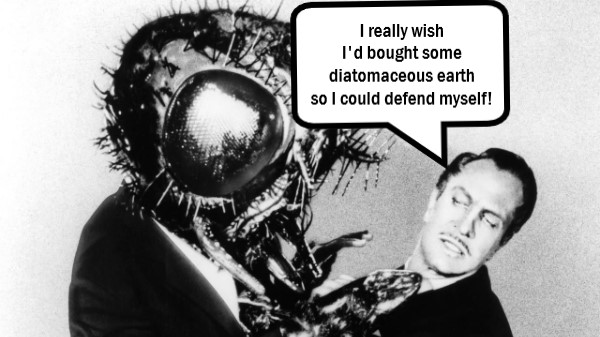
Watch The Fly (1958) or The Fly (1986). Or watch the nightmare sequence in Drag Me to Hell (2009). Or watch either version of The Amityville Horror (1979 or 2005).
Honestly, pretty much every horror movie/TV show/video game has flies incorporated in some way because flies and their children (maggots) like to hang out on rotting, decomposing things (corpses…), and are associated with super bad times. They’re also strongly associated with demons (think Lord of the Flies/Beelzebub) so they tend to turn up in demon movies/shows/games a lot too.
2. Spiders
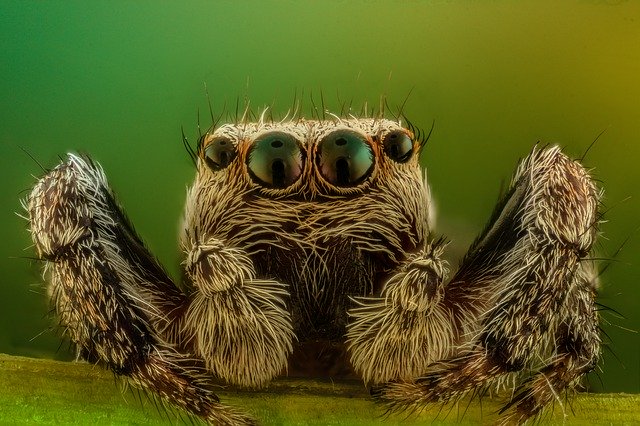
Let’s get one thing straight: Spiders are not garden horrors. They’re not ANY type of horror (and I’m not just saying that because my first pet was a tarantula!). Spiders are sweet lil garden buddies. They’re your friends.
But, a lot of folks are scared of them for some reason — and they’re very commonly-found critters, indoors and out — so I included them in my list of “garden horrors” for those strange people…
If you can set your arachnophobia aside long enough to see the truth, you’ll find that most spiders are harmless. Spiders rarely bite humans (and when they do, it’s almost always the human’s fault!) and, when they do, their bites seldom pierce the person’s flesh and their venom barely registers as a minor irritant (unless the person’s allergic).
If you live in North America, the spiders you’ll see most often in your garden are Garden Spiders (surprise?) and various Orb Weavers. The primary diet of these wonderous, harmless, little friends? The garden horrors that actually will kill your crops! Oh, and you. Spiders love to eat mosquitoes, the deadliest insect in the world, responsible for one MILLION deaths per year.
Even highly-venomous spiders, like the Black Widow, do their fair share to wipe out much more harmful insects from your home/garden. And, contrary to popular belief, Black Widow bites won’t kill you (or cause any serious complications beyond a painful welt and some nausea) unless you’re allergic (or very small/frail).
So what are your options when dealing with spiders?
a. Live Peacefully in Unison
If you leave your spiders alone, they’ll leave you alone. As the kids say: “Don’t start none, won’t be none.” So long as you don’t poke/provoke/startle a spider, it won’t harm you.
Let them help maintain order in your garden and happily munch on true garden horrors. Let a few polite ones reside in your home to take care of disease-carrying flies or deadly mosquitoes.
Keep a bug bottle/jar handy if you notice too many hanging around your territory (or if one of your spider buddies gets out of line and starts cruising around on the floor instead of staying in his ceiling corner — he knows the rules!). Scoop ’em up with your jar and deposit them back in the garden.
b. Discourage Spiders from Taking Up Residence
If you don’t want to live with spiders in your home or garden, but don’t want to kill the eight-legged lil angels: Use peppermint.
Spiders absolutely detest peppermint. If you plant peppermint in your garden (it’s an incredibly easy plant to grow!), spiders will steer clear from the areas where its planted.
You can also spray a mixture of peppermint essential oil and water on your window sills, door frames, and any other cracks in your walls to prevent spiders from entering.
Be aware, however, that peppermint oil is toxic to cats. It might look similar to catnip, but it’ll leave your cat writhing in distress rather than doing the goofy ecstasy-filled somersaults. Your cat would be better off eating the spiders than dealing with DIY spider repellent.
Note: If you have pets of any kind, always check which plants/crops/oils/other is or isn’t toxic to their species!
c. Murder Them
If you’re allergic to certain spiders, desperately wish to be consumed by much nastier bugs, or are some kind of heartless monster who takes pleasure from killing the innocent: You can kill spiders with diatomaceous earth.
I highly recommend not doing this unless you have a very good reason. But, if your home/garden is invested with, say, Black Widow spiders and you’re concerned that your newborn baby or frail grandma is at risk from a potential bite, diatomaceous earth will get the job done. If a spider comes in contact with DE, it sucks all the juice out of the spider, leaving it a shriveled husk. It’s brutal, but do what you gotta do, I guess.
SPIDER Horror Movie Recommendations:
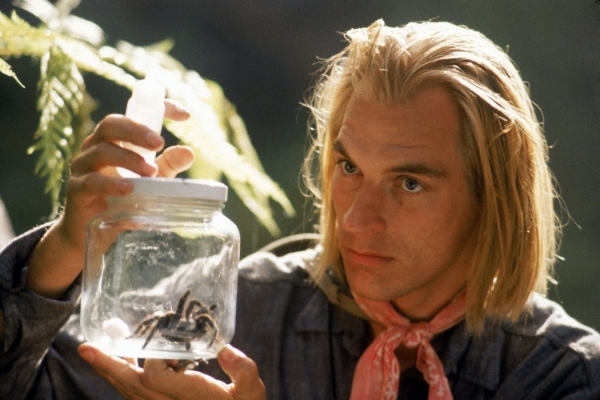
My favorite spider-focused movies are both horror-comedies! Check out Arachnophobia (it’s a “Disney” movie!) from 1990. Eight Legged Freaks (2002) is also goofy fun.
3. Ants
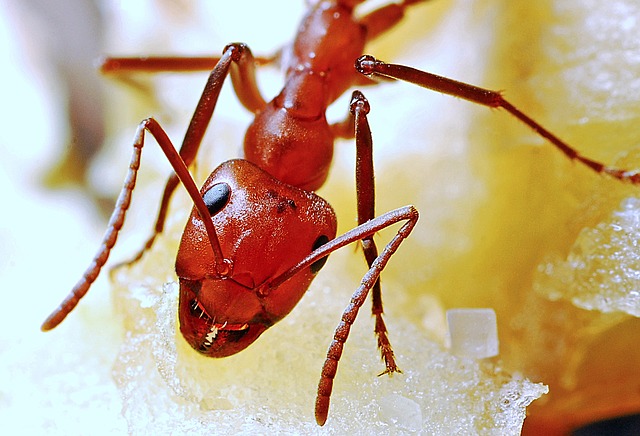
Harvester ants (like Zander, our primary mascot) are awesome. They keep to themselves and are vital to seed dispersal. They also help aerate your soil and prime it for growing new crops.
As a general rule, these ants won’t harm you unless you harm them first (following the same “don’t start none…” rule as spiders). Put ’em in an ant farm as lil buddies.
Other ants, depending on where you live, can be dangerous to you and/or your crops. Learn what type you’re dealing with by IDing the ants in your area. With a little research, you’ll be able to tell if you’re dealing with garden horrors or harmless friends.
Where I live, the black ants are a bunch of jerks. They eat just about anything and everything and go out of their way to bite people (even if the person isn’t bothering them). They cause itchy, painful welts and they’ll chow down on anything even marginally edible.
But, as I said, you need to ID the ants for your area. The wonderful world of ants is far more complex than “red ants good, black ants bad” (don’t be racist). There are lovely black harvester ants who’ll help you out, and there are also deadly red ants who’re total jerkwads.
The thing all ants have in common? Vinegar will kill them and peppermint will keep them at bay.
Want to deter ants but keep your kitties safe? Good news! In addition to peppermint, ants also can’t stand catnip. But, if you plant catnip, make sure you don’t grow it next to any fragile plants (your cats, or neighborhood cats, may be lured to the catnip and then derp out and roll all over the plants you were trying to protect from ants!).
Catnip’s also more effective at repelling mosquitoes than DEET, a chemical pesticide.
ANT Horror Movie Recommendation:
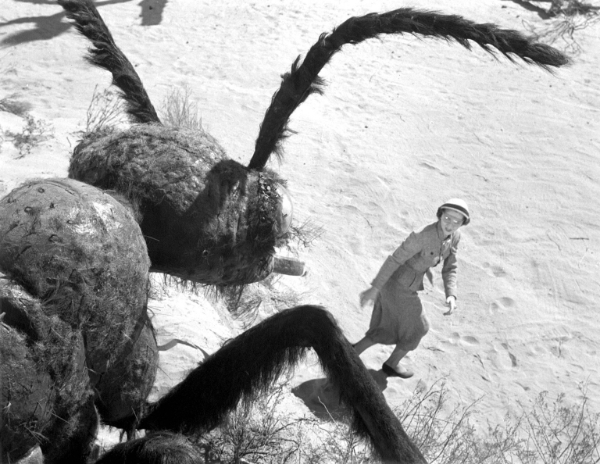
Them! (1954) obviously. My dad and I both named Them! our favorite horror movie from the 1950s, and for good reason. It’s great.
4. Wasps
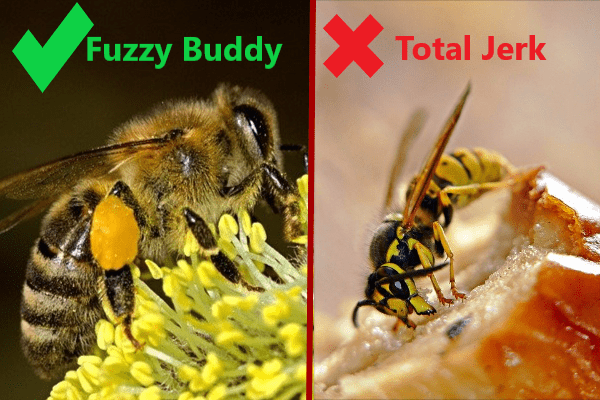
Bees are your friends. Bees of all varieties — honey, mason, bumble — help pollinate your garden crops and flowers. Bees are awesome and they rarely sting, unless provoked. Unless you’re allergic, bees are a welcome visitor in any garden.
Most wasps are pretty chill too (and beneficial, like bees). They’re not as traditionally “cute” as bees, but they do their part to help out with pollination duties. Some even help kill harmful insects, like mosquitoes.
Yellow Jackets are the absolute worst and you need to send them straight back to Hell from whence they came.
Unlike bees and (most) wasps, yellow jackets and their stupid un-fuzzed bodies are useless for pollination. And, unlike bees and (most) wasps, it takes very little to “provoke” them into attacking. And you know how bees can sting you once and then die? Yellow Jackets can sting you multiple times — AND bite you repeatedly! — before they’ll die.
If an exorcism or banishing ritual doesn’t work, you can battle Yellow Jackets with baited traps. You can craft one using a water bottle, some apple cider vinegar, and a banana peel. It won’t kill them, but it’ll keep ’em out of your hair temporarily.
You can also try pouring boiling hot water down their hole. But that’s incredibly risky if you don’t have protective gear…
Honestly, Yellow Jackets are true garden horrors and my heart goes out to you if you’re struggling with them. As you may have guessed from this post, I dig most bugs. Most bugs are nifty and, often, helpful. But Yellow Jackets are straight-up evil and benefit no one.
Most natural means of doing battle aren’t going to work, unfortunately. If you have a serious problem with Yellow Jackets, you’ll likely have to give in and call for professional (often chemical) help. I’m so sorry.
WASP Horror Movie Recommendation:
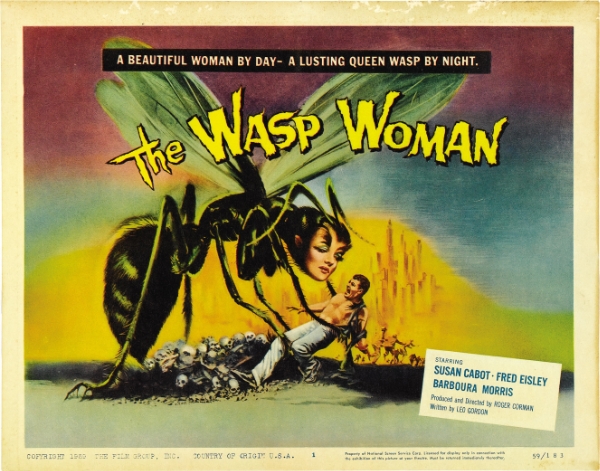
Check out The Wasp Woman (1959). It’s about a gal who tries to defy aging and instead turns into a wasp lady. It’s kinda like The Fly (1958) where the special FX are concerned and it’s pretty silly.
Fun fact: Dad wanted me to include Susan Cabot, as Janice Starlin, on my list of horror characters who wear glasses! She wears some Velma-ish specs when she’s still human.
5. Cockroaches

Cockroaches aren’t just garden horrors, they’re horrors in general. If you see them outdoors, it’s already too late — they’re in your walls.
As garden pests, cockroaches aren’t picky. They’ll devour pretty much anything.
Indoors, they’ll feast on anything from your dog’s kibble to stinky garbage to book bindings to breadcrumbs. And, of course, what goes in must come out: So they POOP on everything too! And their feces, and their skin sheddings (ew), are a common allergen/irritant for humans and pets.
Cockroaches are known for their hardiness (they can even withstand some radiation!), but they have a weakness: Their relatively soft underbellies.
Once again, it’s diatomaceous earth to the rescue. If a roach walks over DE, the powder’s shards will pierce through the roach and dehydrate it from the inside out.
Or, if you’re cool with wasps and you’re confident your roach problem is primarily outdoors (for now), you can enlist the help of parasitic wasps. Plant crops the wasps are attracted too, like cilantro or dill.
COCKROACH Horror Movie Recommendations:

Check out Mimic (1997) directed by Guillermo del Toro. Basically, scientist lady Mira Sorvino (Romy in Romy and Michele’s High School Reunion) decides to fight disease-spreading cockroaches by breeding a new form of super cockroach. How could that brilliant plan possibly go wrong, right?! Watch the movie and find out.
Bonus: My dad worked in the paint department for the special FX in Mimic. Sadly, they just look kinda brown in the actual film, but they had scads of intricate paintwork details in person!
You can also watch the “They’re Creeping Up On You” segment in Creepshow (1982). That has a TON of cockroaches in it. Ick!
6. Weeds

Weeds differ from the above in that they’re not bugs. But they’re garden horrors for real-o.
Well… many of them are.
Once again, knowledge is power here. Identify the weeds you’re dealing with.
If they’re a useless (non-edible), destructive variety of garden weed, destroy them. If they’re beneficial in any way (dandelions can be used for all sorts of tasty recipes, including DIY booze!), keep ’em around as long you need them!
If you opt to kill your weeds: you can either just rip ’em out with brute strength or use some vinegar to shrivel ’em up. Don’t use salt though unless you don’t want ANYthing to grow on that patch of dirt, ever.
WEEDS Horror Movie Recommendation:

It’s pretty silly, but check out The Ruins (2008). Killer weeds/vines, yo! The Ruins features some nice special FX and they based the plants’ looks on real-world vines.
Bonus: One of our podcast guests, The Horror Hack, did a fun review of The Ruins on his YouTube channel!
Onward to Victory!
Now that you know how to face common garden horrors, there’s nothing stopping you from growing your Victory Garden!
Come harvest time, if you need recipe ideas for how to utilize your food crops, download our 100% FREE cookbook!
Become a Patron!
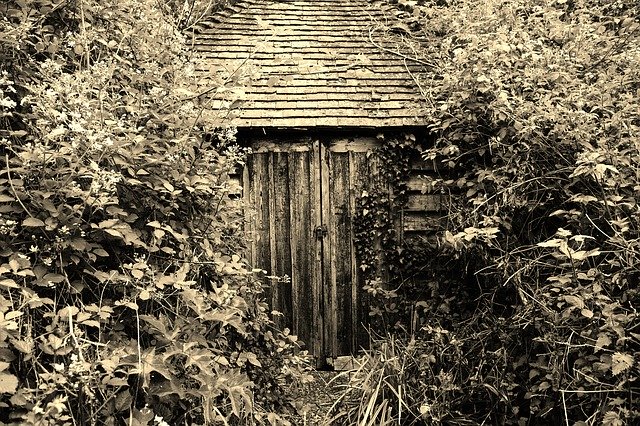

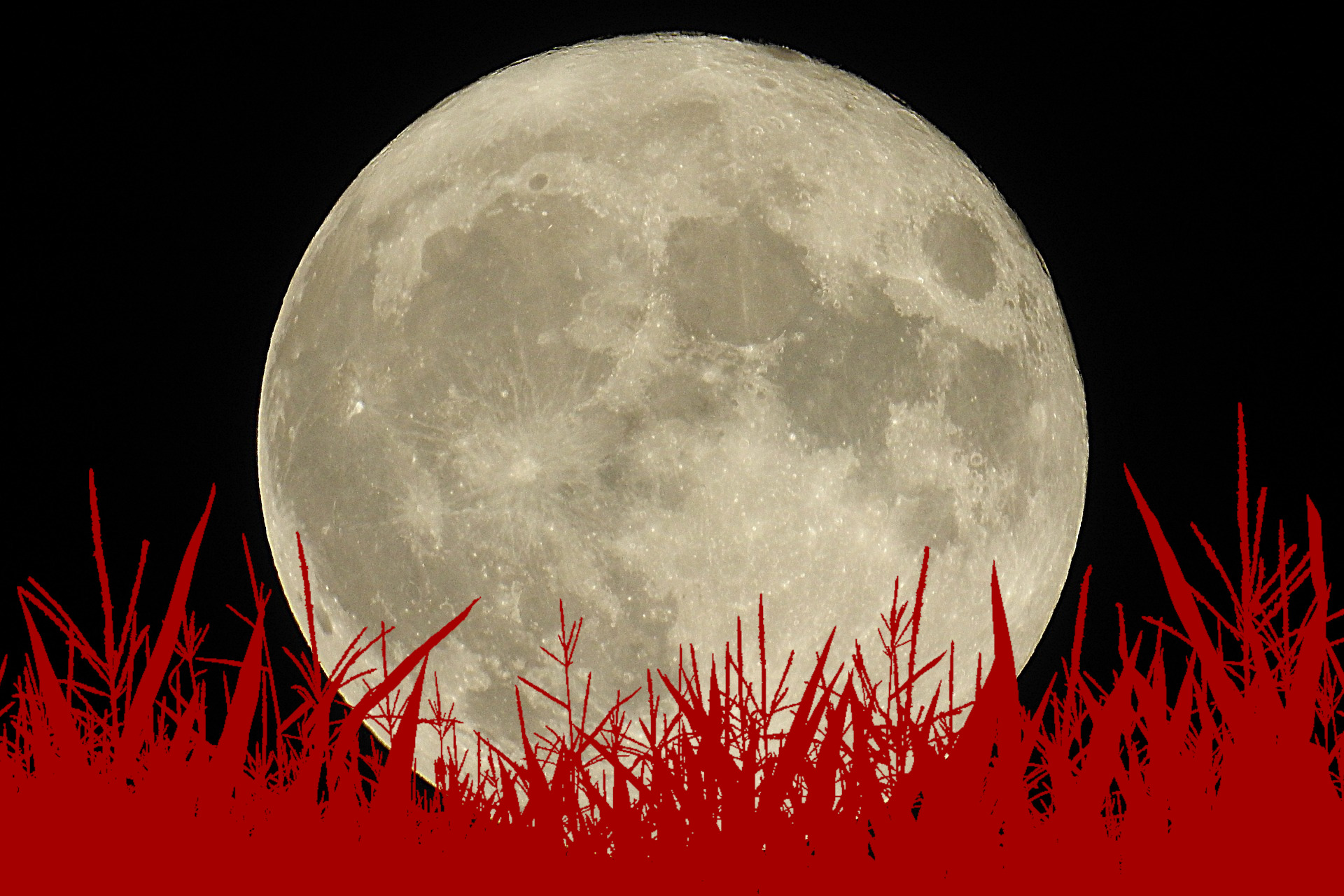


2 thoughts on “Garden Horrors: Securing Your Victory from Natural Forces!”
Comments are closed.